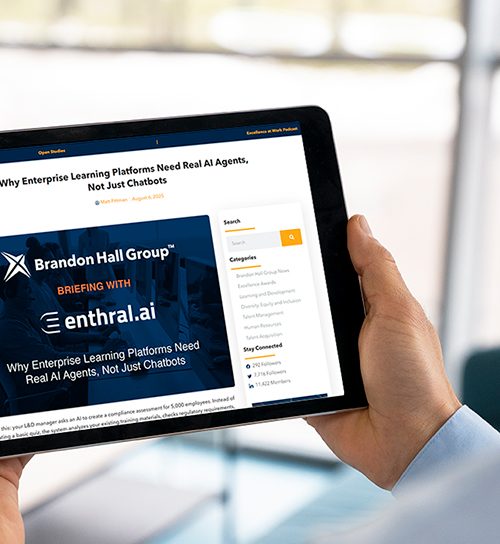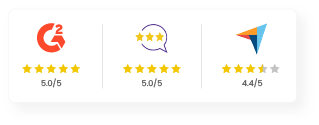A Comprehensive Guide to Finding Your Perfect Learning Platform

We live in a world where continuous learning has to be an integral part of an organization. The workforce and external audiences have to be equipped with the right knowledge and skills they need to be their best versions in a competitive market.
This vision can be achieved if you are armed with the right learning technology platforms like a Learning Management System (LMS) or a Learning Experience Platform (LXP).
But how do you know which is the perfect learning platform for you? With so many options, it’s easy to get lost. This is why we have created a comprehensive checklist to guide you through the process, so that you select a platform that not only meets your immediate needs but also scales with your future ambitions.
Understanding the Basics
Before going deeper into the specifics of LMS and LXP, let’s look at what sets them apart.
Think of an LMS as your organization’s central command center for training. It’s designed to streamline the management of formal learning activities, from onboarding new hires to ensuring compliance with industry standards. An LMS is your go-to for structured content, assessments, and certifications—essential for a well-organized training program.
On the other hand, an LXP is more like a vibrant learning marketplace. It offers a gamut of content formats—courses, videos, articles, and podcasts—curated to cater to diverse learning styles. An LXP is built for personalization, enabling adaptive learning experiences and creating a collaborative environment where learners can create and share content. This makes an LXP ideal for organizations that look for flexibility and engagement in their learning approach.
Identifying Your Needs
The next step should be to zero in on what you need from your learning platform. If your primary focus is compliance training, formal learning, and detailed reporting, an LMS is your best bet. It works well at delivering structured, regulated training and provides the analytical tools needed to monitor and evaluate performance.
But if you are looking to give your learners a more personalized learning experience, add in a variety of external content, and encourage collaborative learning, an LXP might be more suitable. An LXP works well at creating engaging, self-paced learning opportunities and providing advanced analytics to help you understand learner preferences.
Key Features to Consider
When evaluating potential platforms, be it LMS or LXP, several features should be on your radar. Robust integrations are necessary so that the platform can work seamlessly alongside your existing systems. Comprehensive reporting and analytics will help you track learner progress and measure the effectiveness of your training programs.
Data security is another top priority, so choose a platform that adheres to stringent privacy standards. Scalability is also a must-have — look for a platform that can grow as your organization’s needs grow. Customizability will allow you to tailor the platform to fit your specific requirements, while a user-friendly interface will bring more adoption and engagement. Mobile accessibility is another key feature to consider so that learners can access content anytime, anywhere.
Factors to Consider Before Choosing a Platform
Before making the final decision on your platform, take the time to reflect on a few important factors. Define your learning goals clearly—what do you want to achieve for both your organization and its learners? Assess the profiles of your learners, including their job roles and technical skills, to ensure the platform aligns with their needs.
Align the platform with your existing L&D strategy and consider how well it will integrate with your current systems.
Evaluating the Platform
With your options narrowed down, it’s time to evaluate the platforms more thoroughly. Start with more refined online research—read reviews, case studies, and user feedback to gather insights. Taking demos of the platforms will give you a first-hand look at their features and usability.
Go for referrals from peers and industry experts to get additional perspectives on the platforms you are considering. Request detailed proposals from vendors to compare options side by side and make an informed decision.
Questions to Ask Vendors
As you finalize your choices, make sure to ask the right questions. Check if the platform fits within your budget and evaluate the vendor’s credibility, the background of the company founders, and their experience and track record. Consider the platform’s growth potential and how well it aligns with industry trends.
Ask about the implementation timeline and see what kind of in-house support is available. Assess the quality of customer service and the expanse of the content marketplace. Finally, check if the platform will impact your productivity in a positive manner by streamlining your processes effectively.
Conclusion
Selecting the right LMS or LXP is more than just a technical decision; it’s a choice that will shape the future of your organization’s L&D efforts.
Remember, with the right learning technology in place, you will be well-equipped to give your learners the best of learning experiences and drive meaningful results across your organization.











